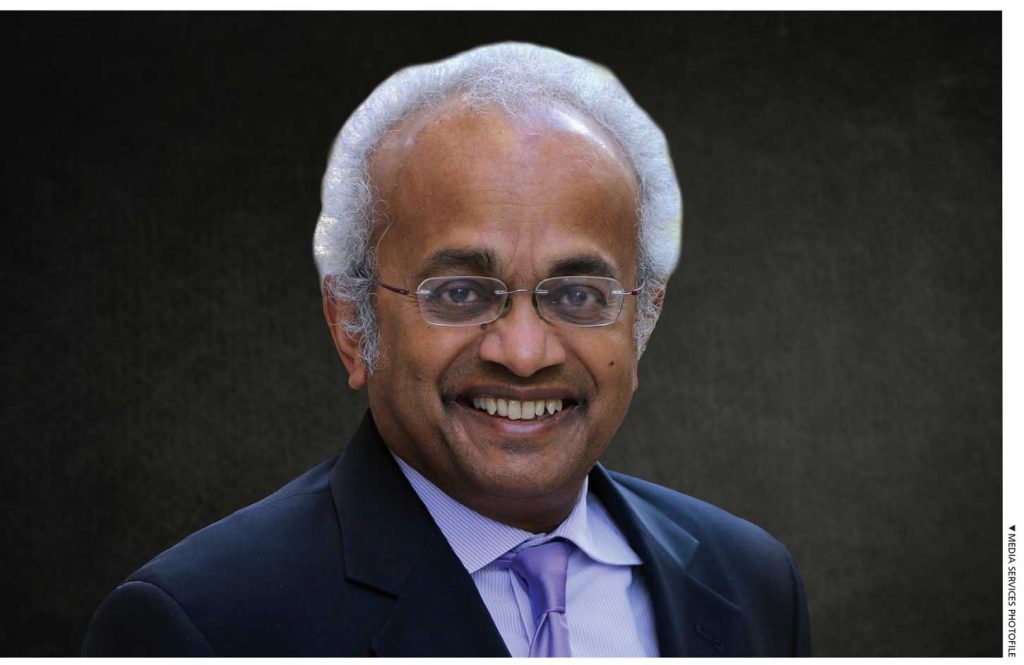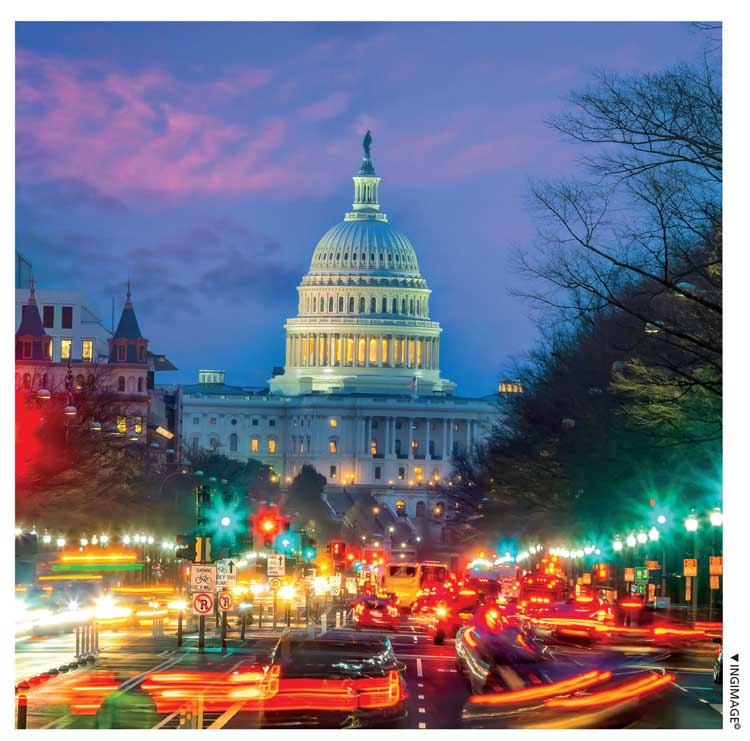
Prof. Shantayanan Devarajan
Macroeconomic stability a sine quo non
Prof. Shantayanan (Shanta) Devarajan is a Professor of the Practice of International Development at Georgetown University where he teaches development policy, the economics of development, and climate change and development. Additionally, he is the Chair of the International Development Concentration at the university.
Prior to this, Devarajan spent 28 years at the World Bank where he was the Senior Director for Development Economics, Chief Economist of the South Asia, Africa, and Middle East and North Africa regions, and Chief of the Public Economics division in the research department.
The author or co-author of some 150 publications, Devarajan’s research covers public economics, trade policy, governance and general equilibrium modelling of developing countries.
In this exclusive interview with LMD International, he offers insights into Sri Lanka’s standing from an economic perspective and its progress in tackling the weaknesses that have hindered growth over the years.
Q: Given your involvement – in an advisory capacity – in the recently concluded IMF Extended Fund Facility (EFF), how is Sri Lanka being perceived in Washington vis-à-vis the likes of the International Monetary Fund and World Bank?
A: The IMF and World Bank see Sri Lanka as a country that over the long horizon achieved relatively high economic growth, enviable social indicators and a democratic tradition.
However, the country fell short in maintaining macroeconomic discipline – observe the large number of incomplete IMF programmes. It also persisted with poor economic policies like loss making state owned enterprises (SOEs), rigid labour regulations and restrictive trade policies.
The IMF and World Bank see Sri Lanka as a country that over the long horizon achieved relatively high economic growth, enviable social indicators and a democratic tradition
These weaknesses came to a head in the current economic crisis, which was triggered by the previous government’s refusal to seek an IMF programme and debt restructuring while financing the fiscal deficit by borrowing from the Central Bank of Sri Lanka.
Given the history of incomplete programmes and policy reversals, the IMF and World Bank are approaching the present programme cautiously, but also with the belief that Sri Lanka can restore macroeconomic stability and resume growth as it has in the past.
Q: And how do you view the progress Sri Lanka has made since the US$ 3 billion EFF was approved at the end of March?

A: Prior to March,Sri Lanka made considerable progress in implementing stabilisation policies – such as devaluing the rupee, increasing interest rates, hiking tax rates and widening the tax base, cutting fuel and electricity subsidies (the bulk of which go to the rich), and expanding social transfers to protect the poor and vulnerable.
Since March, Sri Lanka has been negotiating a restructuring of its external debt with public and private creditors. This along with reforms in SOEs, taxing foreign investment, trade and governance will enable the country to start growing again.
Q: Given Sri Lanka’s sociopolitical landscape, what obstacles do you foresee in its ability to meet the stringent conditions set out in the EFF agreement?
A: Most of these are policies that the government decided it had to pursue to restore macroeconomic stability and the international community’s confidence. Sri Lanka would have undertaken them even without the IMF because they were necessary when the country defaulted.
Some of these policies are politically sensitive because they are aimed at stabilising the economy while protecting the poor and vulnerable – this means the middle and upper classes will have to bear the brunt of the inevitable belt-tightening.
The IMF is undertaking an anti-corruption review of Sri Lanka in consultation with civil society, based on which there will be recommendations on addressing corruption
Unsurprisingly, there has been resistance but the government is committed to implementing the policies because they will benefit the country while preventing some of the elite capture that previously characterised Sri Lanka’s economic policy.
Q: Among the IMF’s watch list is the country’s ‘vulnerability to corruption.’ How will it monitor this, especially with regard to whether the officials who are mandated to oversee this process – usually as part of a committee – are themselves above board and independent?
A: The IMF is undertaking an anti-corruption review of Sri Lanka in consultation with civil society, based on which there will be recommendations on addressing corruption.
And the monitoring of progress in implementing these will almost surely involve third parties.
Q: You said in a recent commentary on future development in Brookings that “even a corrupt government may transfer revenue resources to citizens.” Could you elaborate on this?
A: This was in the context of resource rich countries in Africa like Gabon or Angola, which have a high level of poverty.
These governments are not accountable for the use of oil revenues, which go directly from oil companies to them. Several colleagues and I proposed that these nations distribute the revenues directly to citizens as cash transfers and tax them to finance public expenditure. This way, citizens have a way of holding governments accountable.
The problem is that corrupt governments would not want to distribute revenues and give up discretion in spending.

In a recent paper, Quy-Toan Do and I provide a solution by showing that if a government has spending needs beyond oil revenues (e.g. it wants to build a new capital) but citizens don’t believe it will spend taxes wisely, the administration will find it in its interest to transfer revenues as a way of raising its cost of misallocating tax revenues in the future.
While Sri Lanka is not resource rich, this may be relevant to government borrowing.
In the past, some money has been spent poorly (or we wouldn’t have this debt crisis). To prevent this from happening again, perhaps Sri Lankan policy makers should consider transferring the borrowed money to citizens and taxing them so that the government will be more accountable for the use of external finance.
Q: Moving on to the investment climate, how important are the Port City Colombo and other major development projects to improving investor confidence?
A: The investment climate is greatly important for stimulating both domestic and foreign investment, which in turn are essential for economic growth. But I’m not certain how important development projects are for improving investor confidence.
What investors look for is stability – especially macroeconomic stability. Over the past three years, Sri Lanka has lacked this.
One source of the instability is the paucity of tax revenues collected (one of the lowest tax to GDP ratios in the world); and a reason for this is that Sri Lanka grants tax holidays to many investors. So while tax holidays are introduced to attract investors, they may have the opposite effect by contributing to low tax revenues and macroeconomic instability.
Q: The government is planning to restructure or sell some 430 SOEs, which includes the national airline and other key utilities. Where do you see this process heading and is there an ideal timeline to complete it?

A: The process seems to be proceeding apace. Given the drain on public finances, the ideal timeline is as soon as possible but will be dictated by the time taken to achieve a political consensus around restructuring SOEs.
Q: On the currency front, where do you see the Sri Lankan Rupee heading? And are we right in saying that the US Dollar will continue to be the benchmark for global trade – despite China’s push for dominance?
A: After depreciating to more than Rs. 360 to the US Dollar, the currency appreciated to fall to around 300 rupees in May. Where it will be in the short run depends on market perceptions and actions.
The economy is also under severe import restrictions. Based on other countries’ experiences, the removal of these restrictions is accompanied by a currency depreciation to improve competitiveness and boost exports.
All this is independent of whether the dollar continues to be the benchmark for global trade or “China’s push for dominance.”
What investors look for is stability – especially macroeconomic stability. Over the past three years, Sri Lanka has lacked this
Q: On the global front, what are the main sensitivities to an economic revival and would you dare to set a timeline for a turnaround?
A: While the global economic situation is weak now, the main sensitivities to an economic revival in Sri Lanka are the policies it undertakes to restore macroeconomic stability, restructure debt and promote a competitive economy.
Q: How often do you visit Sri Lanka and what memories do you usually take away with you?
A: I visit Sri Lanka once or twice a year for family reasons – and always take back fond memories of the food and country’s beauty, and the company of my family and friends.
FACT FILE
FAMILY
Wife – Nancy Benjamin
Daughters – Sonali and Kumari
SCHOOLING
S. Thomas’ Preparatory School (Colombo)
United Nations International School (New York)
International School of Geneva
HIGHER EDUCATION
AB in Mathematics (Princeton University)
PhD in Economics (University of California – Berkeley)
PRESENT OCCUPATION
Professor of the Practice of International Development – Georgetown University
COUNTRY OF RESIDENCE
USA
CITY OF RESIDENCE
Washington D.C.
SRI LANKA SWOT ANALYSIS
STRENGTHS
Educated and healthy population
History of reforms resulting in economic growth
Recognition of elite capture and failures in accountability (as exemplified in the aragalaya movement last year)
WEAKNESSES
History of vested interests capturing economic policy
Legacy of civil war and ethnic cleavages
Lack of a tradition of government accountability to the people
OPPORTUNITIES
Highly skilled services trade
Green growth
Migrant workers to supplement declining workforce
THREATS
Emergence of populist leaders
Corruption – leading to breakdowns in law and order
Weak policy implementation – leading to another debt crisis
